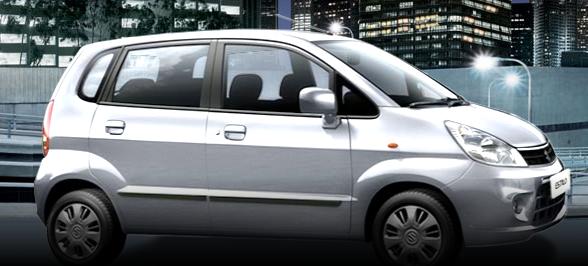
In 2009, along with a minor facelift, Maruti Suzuki dropped the Zen branding from the name. The Maruti Suzuki Alto (model prior to Alto K10), Wagon R (till Aug 2010) and the new Zen Estilo all shared the same chassis. The pricing was also nearly the same as the Wagon R. The Zen Estilo had the same engine and chassis as the Maruti Wagon R both being based on the Suzuki MR Wagon (Nissan Moco). The second generation Maruti Suzuki Zen, called the Zen Estilo was introduced in December 2006 as a part of Maruti Suzuki's Indian market strategy to launch a new car annually for the next five years. In 2006 the second generation (Zen Tiger) was discontinued. It was only available in Black (Zen Carbon) 300 nos or Silver (Zen Steel) 300 nos, cars. A three-door version of the Zen in VXi segment was launched, priced at 5.0 Lakh (ex-showroom, New Delhi). In 2004 Zen underwent a facelift with new body which was called Zen Tiger. This model did not sell well and was discontinued. A diesel version of Zen was launched in 1998 with the Peugeot's TUD5 ( PSA TU engine) engine. Its cost (of the Zen LX model) was around Rs 3,40,000 in India. In 2000, Maruti introduced the MPFI engine with 4 valves per cylinder. In 1999, Zen Classic with retro looking front and rear was launched, but was soon discontinued due to lack of demand. There was a minor facelift in 1997 with body coloured bumpers. The engine head & above spares are exactly identical to the Zen Carburettor MH410 model. Also the Zen which was sold as Suzuki Alto 1.0 in Europe came with a detuned G10B 8-valve engine which produces 54 PS (40 kW) at 5500 rpm and 77 N⋅m (57 lb⋅ft) of torque at 4500 rpm. Zen used an all aluminium engine Suzuki G10B engine which produced 50 BHP of power at around 6000 RPM. In Europe and many other export markets, the car sold as the Suzuki Alto. While it looks very similar to the Cervo Mode, it has a lot of unique sheetmetal as it is ten centimeters longer and ten wider. TheĮngine volume of this model is still 793 cc.Based on the Suzuki Cervo, the first generation Maruti Suzuki Zen was introduced on (MH410). This vehicle is the result of many years of work by Maruti.

In 2015, the company launched the sale of compact Maruti Suzuki Celerio hatchbacks equipped with a two-cylinder turbodiesel engine.

New motorcycle factory began in the city of Rohtak, in the Indian state of Haryana. Ertiga stands for 3-row seating configuration. The name of this car is very symbolic, since Er translates as a row (Rows), and Tiga means 3, i.e.

At this time, the company released a seven-seater compact van "Maruti SuzukiĮrtiga". And in 2004, the construction of a new plant of theĬompany began, which also included a design bureau, intended to start the creation of its own Maruti models with the technical support of the Japanese brand.Īlready in 2010, the company set its own record, producing 1.214 million vehicles. In the same year, deliveries of Maruti-Suzuki cars began to neighboring countries, primarily Pakistan and China. But already in 1998 the start of production of the current model range of Until 1997, Maruti-Suzuki was engaged in the production of run-in and discontinued Suzuki vehicles in other countries. The interior of the car was changed: it became more spacious and more comfortable. "Maruti-800" with more rounded shapes, under the hood of which is located a 4-cylinder carburetor engine with a volume of 993 cm3 with a capacity of 50 or 54 horsepower, allowing it to accelerate The release of "Maruti-1000", also famous as "Zen", dates back to this time. Since 1992 "Maruti" started selling its cars to the countries of Asia and the Middle East. Under the hood of this car is a 37 horsepower Suzuki engine. In 1984, sales of the Maruti-Suzuki 800 model, built on the basis of Negotiations, in 1983 the company "Maruti-Suzuki" was registered, which began to produce cars of the Japanese brand in India.

In the same year, the government of the country turned to the Maruti company with a request to conclude a contract for the production of cars with one of the foreign brands. Sold in the Indian car market in those years were British and Japanese brands. In 1982, the Indian economy began to explode, and the country's huge population was in dire need of inexpensive cars that could improve the country's living standards.


 0 kommentar(er)
0 kommentar(er)
